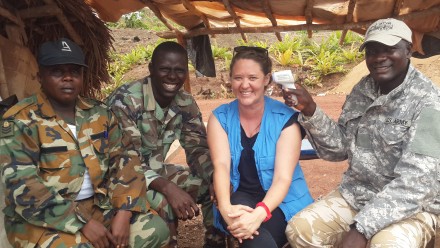Heart health back in the spotlight: New guidelines for cardiovascular disease risk assessment
Share
Deaths from heart attack and stroke are on the rise.
Supporting heart health and wellbeing for Aboriginal and Torres Strait Islander communities needs person-centred and holistic approaches to care. The release of long-awaited guidelines for screening and management of heart disease is the first step in addressing early and preventable deaths from heart disease in Aboriginal and Torres Strait Islander communities.
The Enhancing Chronic Disease Care (ECDC) team at the ANU National Centre for Aboriginal and Torres Strait Islander Wellbeing Research are pleased to have supported development of new national cardiovascular disease (CVD) guidelines.
The ECDC team provided robust evidence synthesis to the guideline development group to support inclusion of broader determinants of health and wellbeing and considered holistic management. Factors such as socioeconomic status and ethnicity form part of these new CVD risk assessment guidelines. Inclusion of these factors is a step towards acknowledging the broader drivers of health and wellbeing that impact an individual’s risk of having a CVD event. This is especially critical for Aboriginal and Torres Strait Islander communities, who experience higher and earlier preventable CVD risk, driven by the ongoing and lasting impacts of colonisation and racism. Work undertaken by the ECDC team on shared decision making in healthcare, CVD risk communication and connected communities aims to facilitate and support heart health and wellbeing at the individual and collective levels.
The new guidelines are based on the latest evidence from Australian and international research and are aimed at guiding GPs, nurses, and Aboriginal and Torres Strait Islander Health Workers on how to carry out best-practice CVD prevention for clients in primary care. The guidelines describe how to calculate a person’s risk of having a heart attack or stroke in the next five years based on factors such as age, sex, ethnicity, health condition and family history. The advice thus generated on how to best address and prevent CVD risk is tailored, depending on the level of risk.
The ECDC team attended the launch of these new guidelines at Parliament House on Thursday 20 July 2023. The launch marked a culmination of work begun in 2020 that aimed to support development of CVD guidelines that were more appropriate for Aboriginal and Torres Strait Islander people. The guideline was released by the Australian Chronic Disease Prevention Alliance, and included input from clinical expert and consumer groups.
The ECDC team is now turning its attention to how new guidelines and Australian CVD Risk Calculator can be used most effectively in real, everyday practical terms to support CVD prevention. There are several opportunities in this space to make a real impact on CVD prevention and management for Aboriginal and Torres Strait Islander communities, including:
- ensuring guidelines are used correctly and effectively by staff in primary care;
- tools to support calculation of CVD risk in clinical practice software and workflows,
- resources for patients to support shared decision-making, and to support understanding and talking about CVD risk
To learn more about the work of the ECDC team, visit Enhancing Chronic Disease Care | National Centre for Epidemiology and Population Health (anu.edu.au) or contact ecdc@anu.edu.au with any questions.










